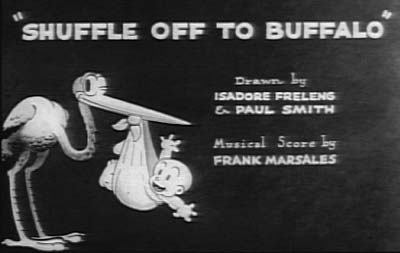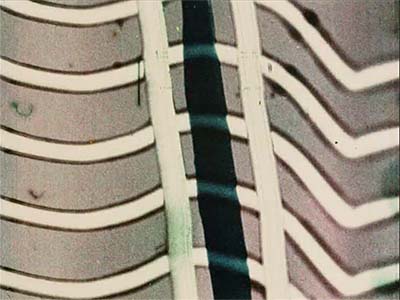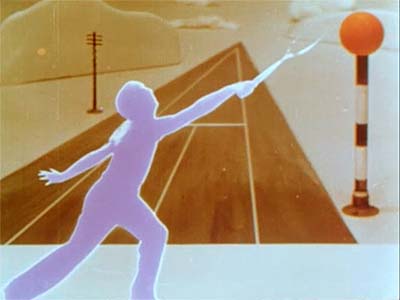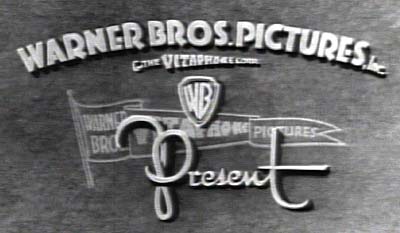
One of the biggest differences between the way animation were made in the golden era and today is the way they were timed. Before the TV era, cartoons were timed to a musical beat, and how musical timing has become a lost art.
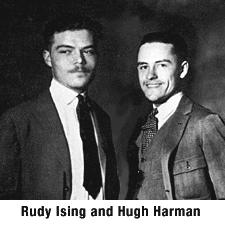
![]() Well, almost lost… I happened to be speaking to Mark Kausler about the article, and he mentioned that he had a complete set of bar sheets, given to him by Rudy Ising, for an early Merrie Melodies cartoon- "Shuffle Off To Buffalo". He graciously offered to let us digitize it and share it with you. This document is the "smoking gun" that animators interested in timing theories of the past have been looking for. It’s a highly detailed plan for the timing of a typical cartoon from the early days of sound. This isn’t a particularly good cartoon, but it gives us a clear look at the process. That makes it invaluable.
Well, almost lost… I happened to be speaking to Mark Kausler about the article, and he mentioned that he had a complete set of bar sheets, given to him by Rudy Ising, for an early Merrie Melodies cartoon- "Shuffle Off To Buffalo". He graciously offered to let us digitize it and share it with you. This document is the "smoking gun" that animators interested in timing theories of the past have been looking for. It’s a highly detailed plan for the timing of a typical cartoon from the early days of sound. This isn’t a particularly good cartoon, but it gives us a clear look at the process. That makes it invaluable.
I’ve gathered together all the reference you need to analyze these bar sheets… I’ve supplied you with frame grabs from each scene to act as a storyboard, and I’ve posted a 24 fps movie file of "Shuffle Off To Buffalo". My own knowledge of animation timing theory is extremely limited, so I would appreciate it if the professional animators who are reading this blog would share their expertise through the comments link below, or by posting analysis to their own blogs. Nick Cross and Michael Sporn are the first to weigh in with their comments. I’ll add links to other blogs discussing this topic as I am made aware of them.
Musical timing is one of the principle aspects of early cartoons that set them apart from modern animation. The perfect rhythm of cartoons is what makes them so appealing and magical. Rhythmic timing doesn’t cost any more, in fact, careful planning saves money. “Shuffle Off To Buffalo” was planned down to the frame by two men- a director and a musician- before a single animation drawing had been done. The results are "magical perfection". Modern animation timing requires constant testing and revising by teams of artists and technicians to look "natural". Who wants cartoons that look natural? How many manhours could be saved with this technique? Let’s share info and try to recapture the "lost art" of Musical Timing!
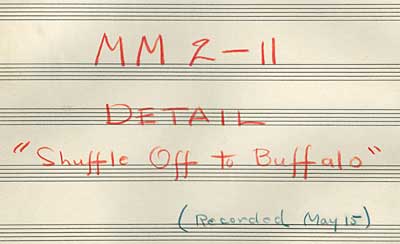
These 20 pages comprise the complete "detail sheets" (aka "bar sheets") for the 1933 Merrie Melodies cartoon, "Shuffle Off To Buffalo". This document was prepared by the director, Rudy Ising in collaboration with the musical director, Frank Marsales.
Shuffle Off To Buffalo Page 02
Shuffle Off To Buffalo Page 03
Shuffle Off To Buffalo Page 04
Shuffle Off To Buffalo Page 05
Shuffle Off To Buffalo Page 06
Shuffle Off To Buffalo Page 07
Shuffle Off To Buffalo Page 08
Shuffle Off To Buffalo Page 09
Shuffle Off To Buffalo Page 10
Shuffle Off To Buffalo Page 11
Shuffle Off To Buffalo Page 12
Shuffle Off To Buffalo Page 13
Shuffle Off To Buffalo Page 14
Shuffle Off To Buffalo Page 15
Shuffle Off To Buffalo Page 16
Shuffle Off To Buffalo Page 17
Shuffle Off To Buffalo Page 18
Shuffle Off To Buffalo Page 19
Shuffle Off To Buffalo Page 20
Feel free to print out these images to use as a visual reference when you’re studying the bar sheets. Every scene in the picture is depicted here, along with its scene number.
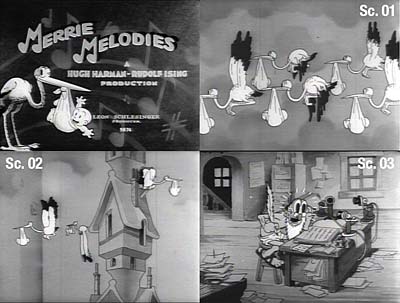
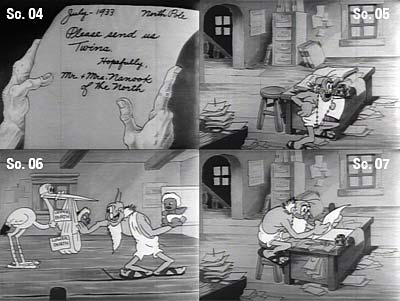
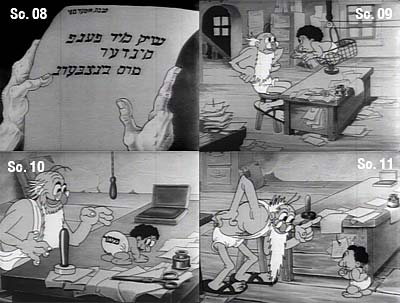
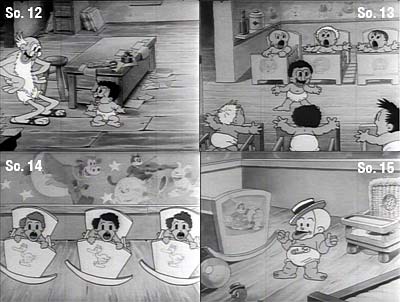
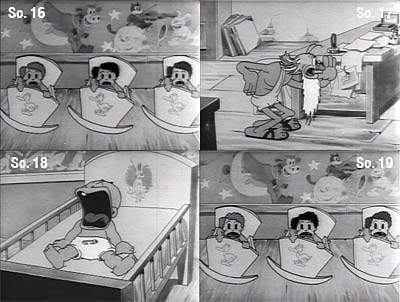
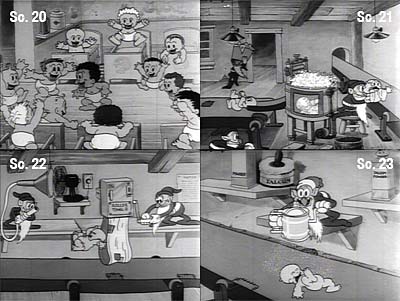
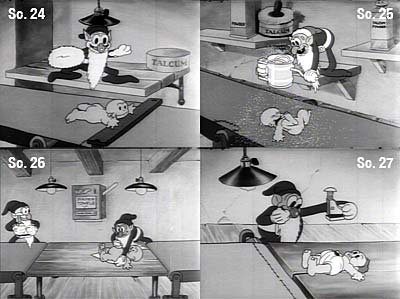
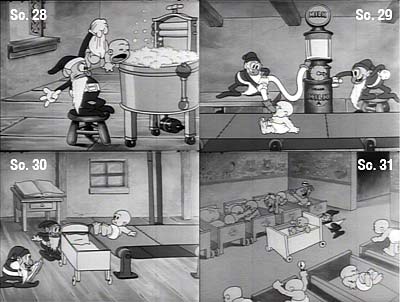
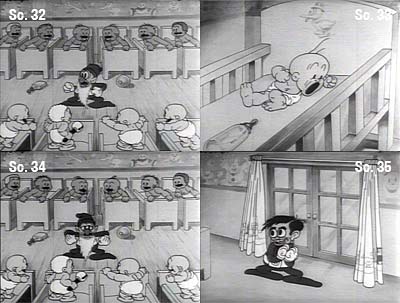
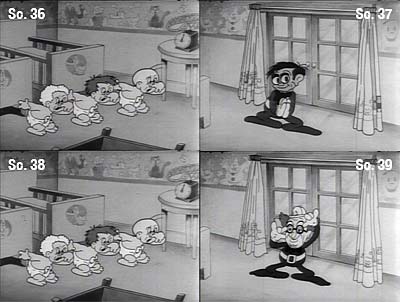
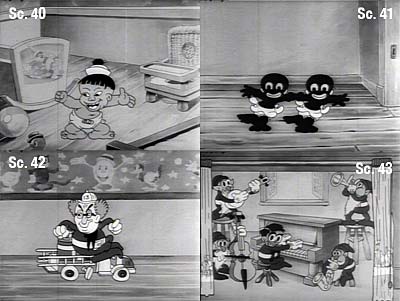
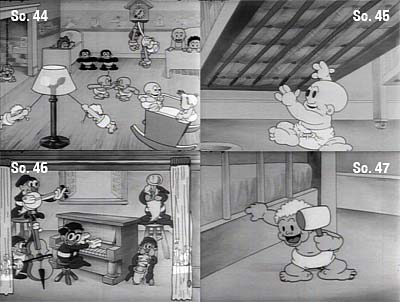
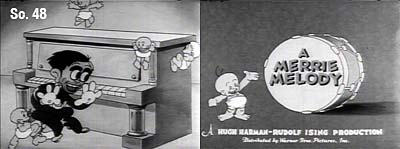
I have encoded this Quicktime movie at 24 frames per second, so you can count frames and compare to the bar sheets. If the movie fails to load quickly, check back a little later.
Shuffle Off To Buffalo (WB/1933)
(Quicktime 7 / 30.6 megs)
Mark Mayerson explains how to use a metronome to time animation
Hans Perk posts lecture notes by Disney composer, Albert Hay Malotte and bar sheets by Dave Hand for Trader Mickey. More on bar sheets at afilmla.
Stephen Worth
Director
Animation Resources
This posting is part of the online Encyclopedia of Cartooning under the subject heading, Animation.














